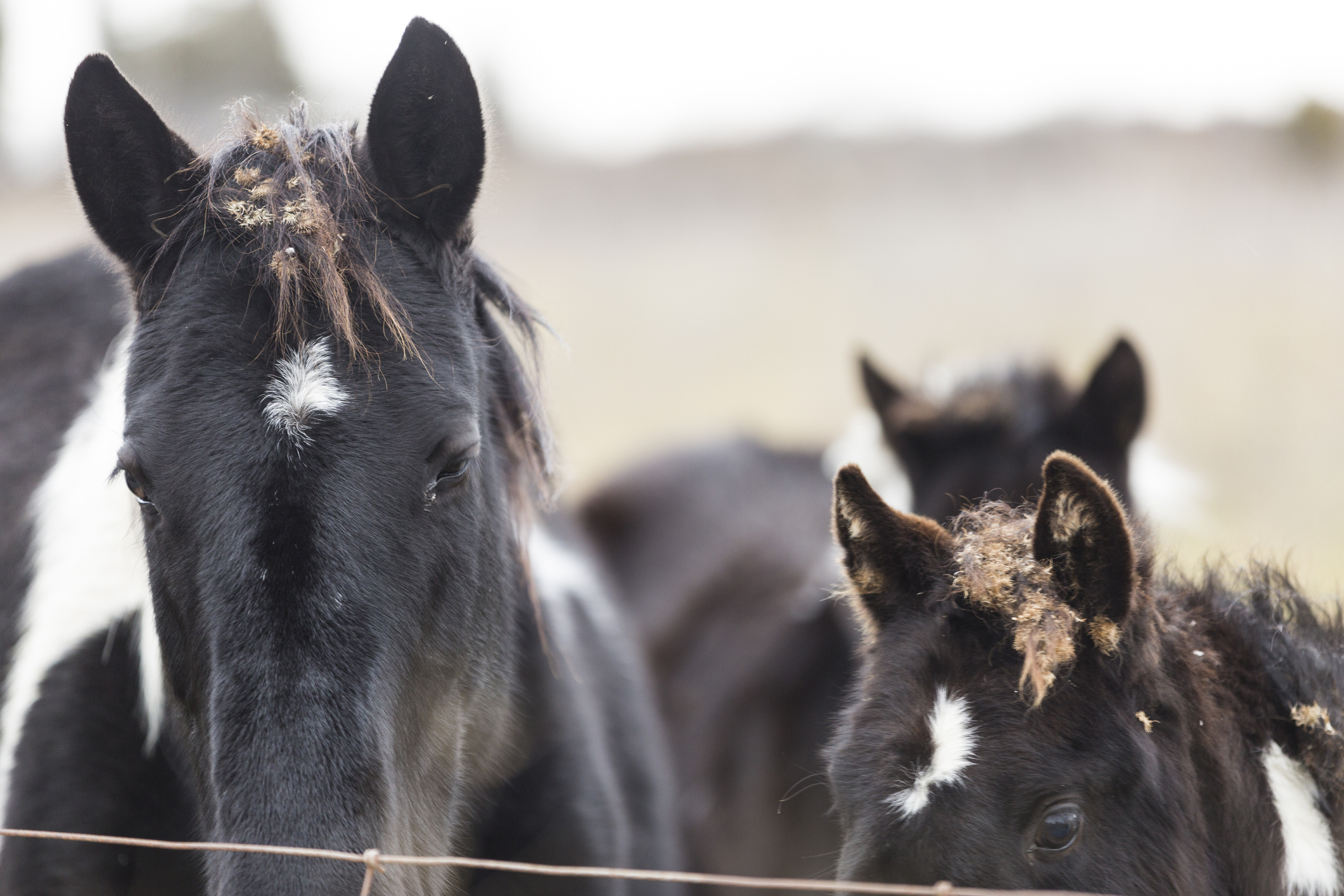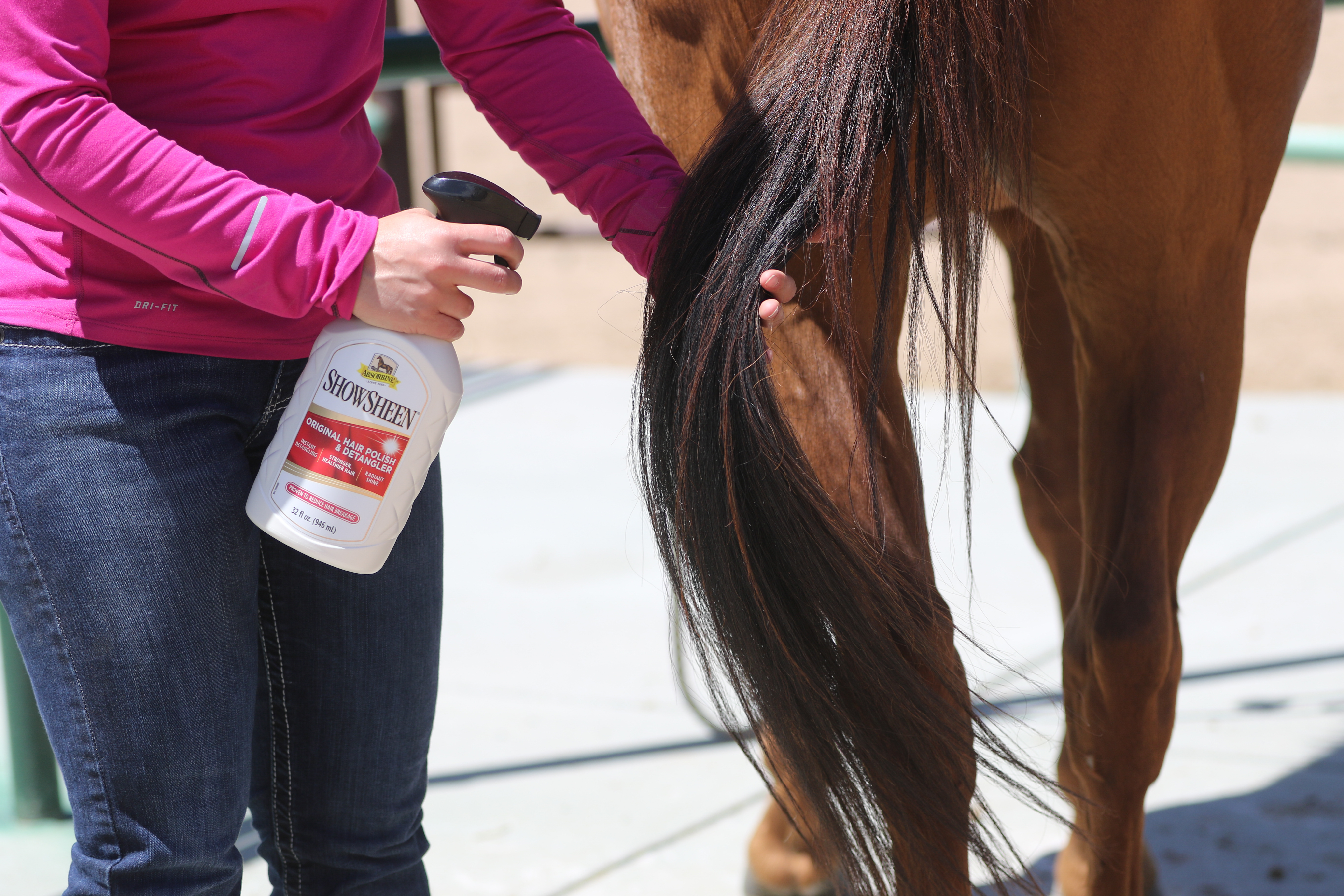
WHAT YOU SEE:
Your horse’s mane is tightly bundled up in burrs. When you try to pick at them, he pulls away as if the area is sore.
WHAT YOU SHOULD DO:
Bring your horse in today for an extended grooming session.
[MORE: Do’s & Don’ts of Mane Care]
Why: Although on the surface this appears to be only a pesky grooming issue, it’s actually a first-aid problem. That’s because most types of burrs have hooked spines that can penetrate skin and work their way deeper with every movement. And, the tangle of burrs and hairs tends to get tighter over time, potentially breaking mane hairs and even pulling them out by the roots. At the very least, the skin is inflamed, and your horse may rub the affected area on anything he can find. This will tighten the bundle of burrs and potentially lead to skin damage. You’ll want to allow at least an hour, possibly two. It’s important, for the sake of your horse’s skin and mane hairs, as well as for the sake of your relationship with him, that you be patient and gentle.
Here’s a step-by-step method for removing the burrs and soothing the affected area.
1. Treat the skin.
Why: To soothe and protect it.
How: Select a liquid or gel wound treatment that has proven protective and healing properties. Using a clean, soft ear-bulb syringe (available at most pharmacies) or a hypodermic syringe with the needle removed, apply about three tablespoons of the product to the skin at the base of the tangled hairs/burrs.
2. Saturate the hair and burrs with a mane and tail detangler.

Why: To lubricate them, making it easier for the caught hair to slide out of the burrs’ hooks.
How: Generously spritz or sponge the product onto—and into—the tangled mess until all involved hairs and burrs are wet. Wait a few minutes for the detangler to seep into the tight areas, then gently and gradually start sliding a few hairs at a time from the grasp of the burrs and knots.
Tip: A small crochet hook can be helpful here. When you work each hair loose from the knots, be sure you’re pulling in the right direction—from the knots, rather than from the roots.
[MORE: Horse Shine & Detanglers]
3. Dispose of burrs carefully.
Why: When you drop a burr, you’re potentially planting hundreds of seeds. And, a carelessly discarded burr could get onto a blanket or saddle pad and cause a whole new set of problems.
How: Discard burrs in a secure container, such as a heavy plastic feed sack, and tie it closed. Find the source of the burrs and check local weed books to see whether the plants are on a noxious-weed list. If so, that means they’re not indigenous to the area and may require special handling by county, state, or federal authorities. Watch for regrowth next year, and ask your county extension agent for environmentally safe ways to eradicate the weeds before new burrs develop.
PROGNOSIS:
Good. The skin will heal as long as it is kept clean, fly-free, and soothed so your horse doesn’t rub—and do more damage. If there’s much bare skin exposed, and particularly if it’s pink skin or in any way damaged, consider having your horse wear a clean, properly fitted mane tamer, such as a Sleazy hood, to prevent sunburn and to keep flies from pestering open wounds. If the skin is raw or damaged, apply a thin layer of the wound treatment under the hood. Any broken or clipped hair will grow back at a rate of about 1⁄2 inch per month.






